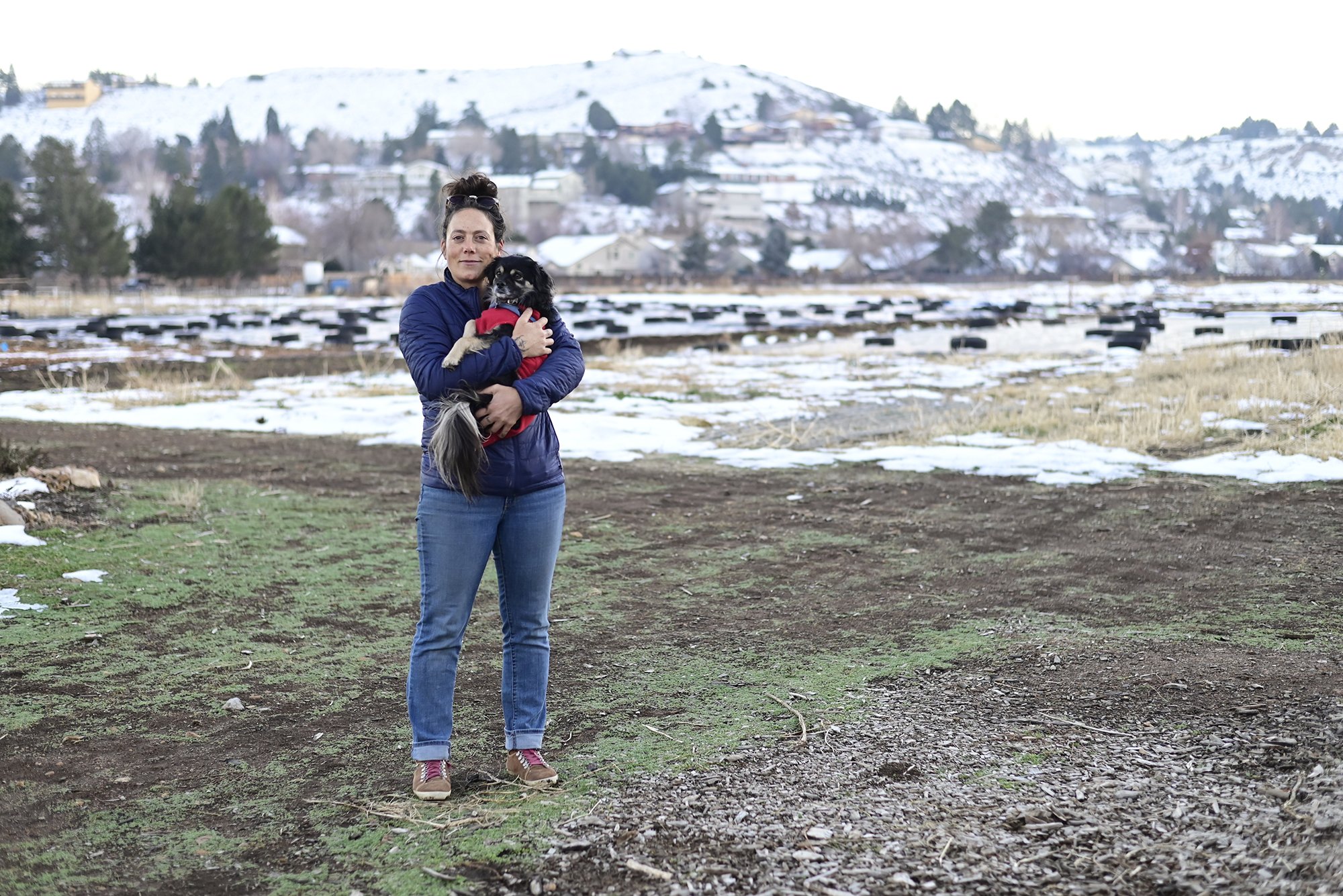As the recent wave of pogonip covered many parts of a local five acre farm, the sun set on the shortest day of the year. The fields were all covered with tarps and tires as the farm manager fixed the shade structure for the goats. The farm dog, Lefty, was on guard duty as I waited. Heavy snow was on its way.
Most food travels nearly 2,000 miles from farm to table, sometimes thousands and thousands more. Much of the food is held under refrigeration, further increasing carbon emissions. Local food rarely travels more than a few miles and does not lose quality, flavor, or nutritional value in that short distance.
“It’s meant to be a place where a person can come and learn about agriculture,” explained Lyndsey Langsdale, the farm manager of Reno Food Systems. We stood outside of the solar powered refrigerator in the last sunny spot of the day, which was quickly fading.
Reno Food Systems is an urban farm located on the corner of Mayberry drive and McCarran boulevard. Everything from fruit to fresh vegetables to medicinal and culinary herbs are produced on the lot during the growing season. Everything is grown organically and with sustainability in mind.
“We have workshops, we have volunteers, we have interns,” said Langsdale. The farm has become a staple in the local food community. “We also do a lot of educational things as well.”
The non-profit began as a vision between a few friends about five years ago and this last season was the fourth successful growing season on the farm. Next year they hope to expand growing into the winter. Currently, somewhere between Reno and Iowa is a large hoop house they ordered and plan to set up during the winter. This will extend the growing season.
Reno Food Systems can be found on the web at renofoodsystems.org
“We have a very special opportunity to be able to steward this land…and make it something that’s a benefit to the community and do it in a way that makes sense to use and matches our values as humans” said Langsdale. This project allows the people behind the organization to work in a way they want to live their lives and exist as community members. “We get to create that from scratch.”
This philosophy has spilled beyond growing food, allowing Reno Food Systems to become more than an urban farm. Notably, they have a food justice program. The highlight of this program is a mobile farmer’s market. “That’s where we take our truck out to different food desert type neighborhoods,” explained Langsdale. A food desert is a place where there is no access to fresh food. These are typically lower-income areas without a grocery store in walkable distance.
Langsdale explained there is a federal program that provides coupons for low income people to use at farmers markets, however, many times, she said, these coupons go unused as farmer’s markets are not accessible. The mobile food truck combats this by parking in these areas around town and providing fresh and nutritional food.
“We parked our mobile farmer’s market at the Reno Housing Authority’s low income senior residence this year,” explained Langsdale. This allowed the use of state provided coupons for seniors to use at farmers markets.
Another way Reno Food Systems stands out in the community is by donating food. This year alone, Langsdale estimates they donated about 1,000 pounds of fresh vegetables to people experiencing food insecurity, including the unhoused. They do this by working with many of the community partners and advocates.
As a non-profit the organization must stay funded. They accomplish this through a three-tiered funding model: sales of produce, grants, and memberships. This requires everyone at the farm to wear many hats in order to grow the food and earn the money to stay afloat. There are a few local community grants they receive and these required diligent reporting and management.
Ways a community member could support the farm is by shopping there during the growing season or purchasing seedlings for a garden. However, they also have a membership program which allows people to create a recurring donation.
“Finding the funding and staff to maintain grant writing and all of the fun little details in writing grants and reporting on them,” has been the largest challenge Langsdale explained. This year they ran into many overwhelming moments as a team as they are pushing capacity. “I think all of our team members are the type of people who want to do everything.”
With the sun long set and the temperature dipping, Langsdale was optimistic about the farm and the value it is providing the community. “Our goal is to be an asset to the community, but we don’t expect to plop a farm in the middle of a neighborhood and think that everybody is going to understand what we’re doing,” she said. It is a two-way street they are working through together with the community around them.
“Definitely being conscious of how we affect the neighborhood, both the positives and the negatives and really working with our immediate neighbors to be an asset and teach about the realities of growing food,” Langsdale said.

